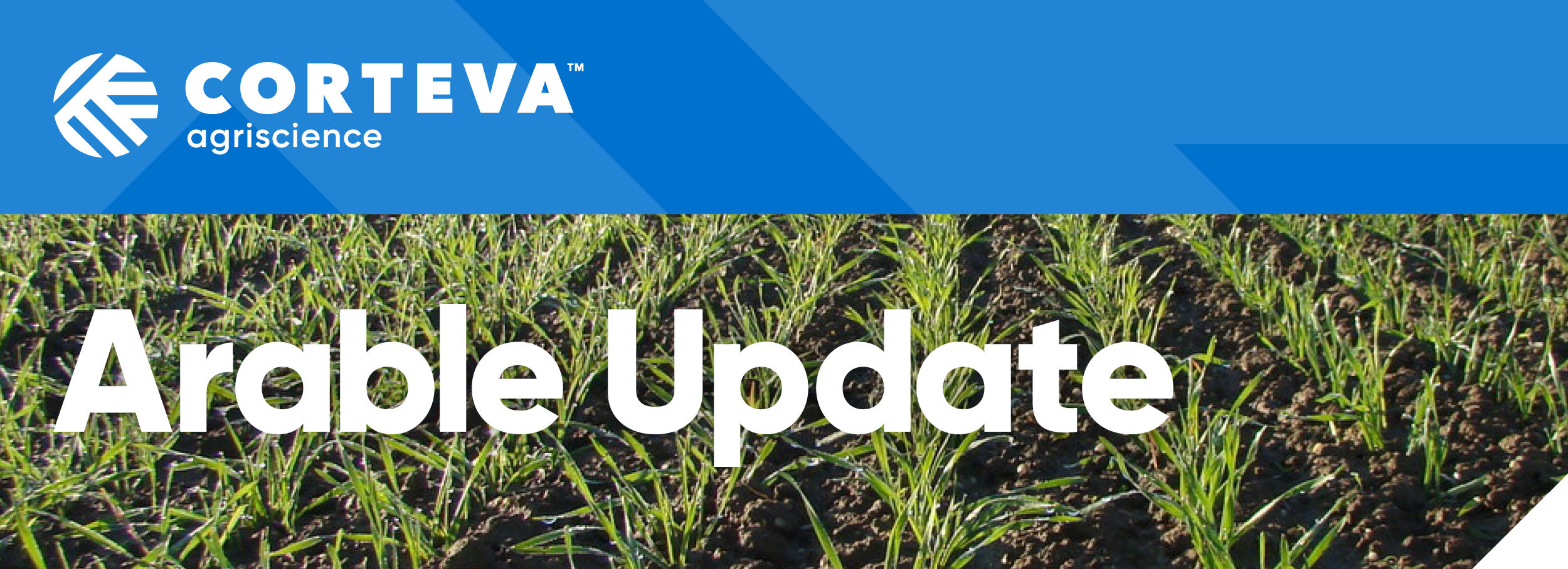
|
|
|
In the April edition
- Optimise your weed control with Pixxaro EC
- T1 and T2 fungicide decisions
- Potato planting progress and weed management considerations
- Sugar beet crop status and how our solutions will help maximise yield
- Oilseed rape crop update
- Pioneer winter oilseed rape hybrid range
- Instinct: Keep nitrogen where it’s needed during maize establishment
- Starane Hi-Load: Label changes to advance its use in maize
- Ympact biostimulant seed treatment
- Update your communications preferences and enter our monthly prize draw
|
|
|
Optimise your weed control with Pixxaro EC
As the growing season progresses, it's essential to address weed control as soon as possible to prevent competition impacting yield. Even if residual herbicides have been applied for annual meadow grass, broad-leaved weeds will inevitably emerge.
Selecting the appropriate herbicide is crucial for effective weed management. Current cold conditions pose a challenge for sulfonyl-urea (SU) herbicides, which require warm and moist conditions to be effective, Even when there is sufficient soil moisture, if it remains cold, there is no active growth and consequently the SU herbicides will not work properly.
In contrast, Pixxaro® remains effective under cold conditions. Combining Arylex™ and fluroxypyr, it offers an alternative mode of action (Auxin mimic) and is particularly effective against ALS-resistant chickweed and fumitory - two significant problem weeds affecting over 50% of spring barley crops in Scotland.
Pixxaro boasts a broad weed spectrum and the Arylex component also enhances the control of ALS-resistant poppy, further broadening Pixxaro's efficacy.
By incorporating Pixxaro into your weed control programme, you can ensure robust protection against a wide range of weeds, even under challenging conditions. It excels at controlling challenging weeds such as cleavers, fumitory, cranesbill, chickweed, fat hen, black bindweed poppy and shepherds purse and may be used much later in the season than phenoxy herbicides.
Where large polygonum species are an issue, control may be boosted by adding an SU herbicide such as Harmony® M.
Pixxaro also degrades rapidly in soil, allowing flexible following crop options, a key consideration during dry periods where actives with slower degradation times could impact any following sensitive crop species that are drilled.
|
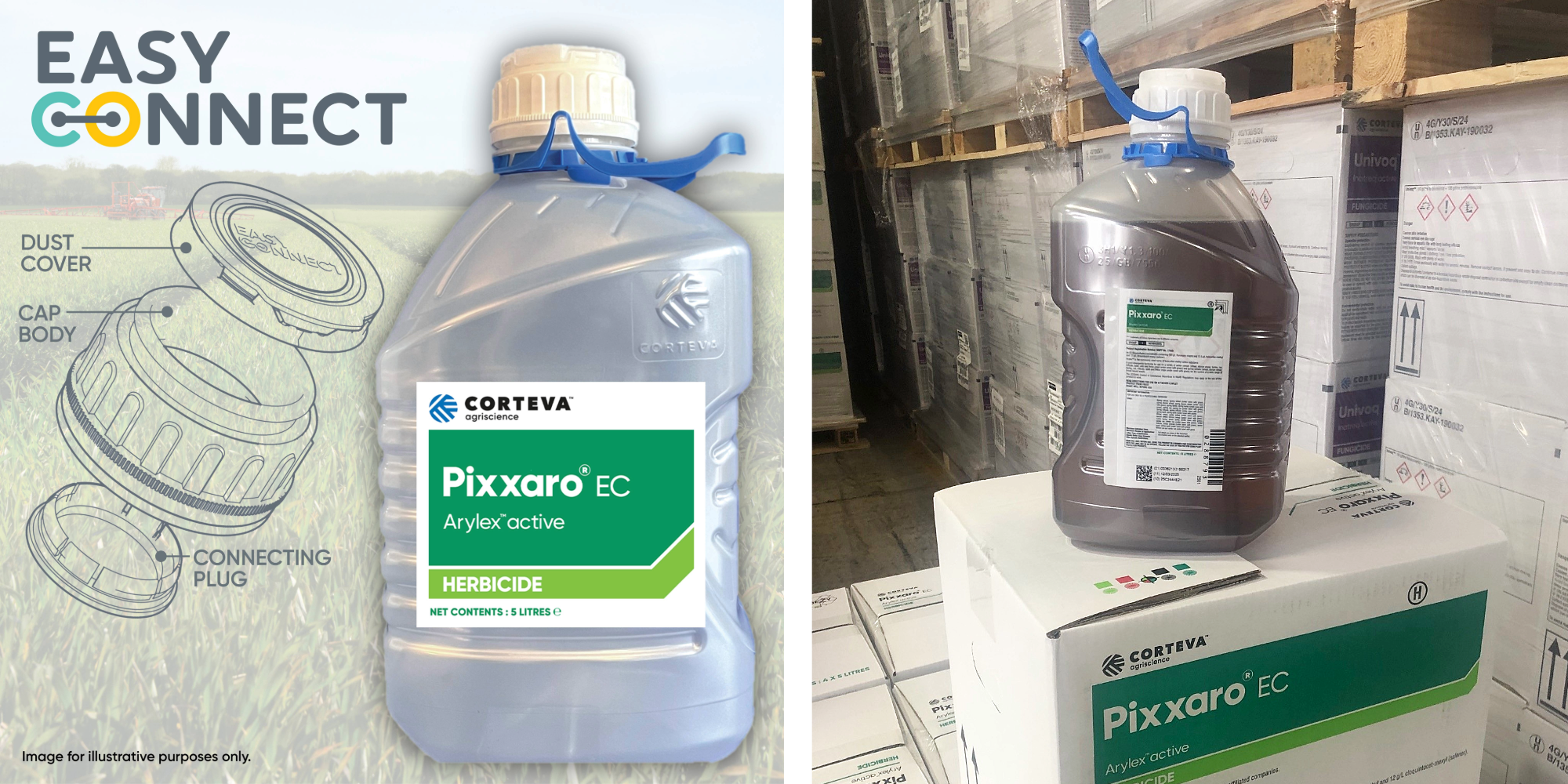
|
|
|
|
|
T1 and T2 fungicide decisions
We find ourselves on the cusp of T1 with rain now following a longer dry spell, but the historic weather is only part of the picture as many growers found out in 2012 when a dry start to spring was followed by torrential rain, leading to a severe septoria outbreak.
Therefore, a planned approach to disease control is likely the best strategy, utilising good and reliable chemistry that does not cost an unacceptable amount. Another consideration has to be avoiding the use of the same chemistries at both T1 and T2 which can lead to increased resistance. On both accounts, the inclusion of Inatreq™ active, as found in Univoq™, addresses the need for high quality chemistry at a reasonable cost whilst breaking the reliance on SDHI + triazole chemistry (the most likely alternative).
Used at T1 or T2, Univoq offers great broad-spectrum disease control and has demonstrated its ability to maintain high yields across a wide range of different seasons. With over 2 million hectares treated, it is a well-tried and tested component of disease control programmes with a loyal following.
For more thoughts on the season and use of Univoq, why not watch these videos by Corteva’s Craig Chisholm, Sally Harris, Abi Morton and Tom Rouse, which look at different situations and the benefits Univoq provides in those situations.
|

|
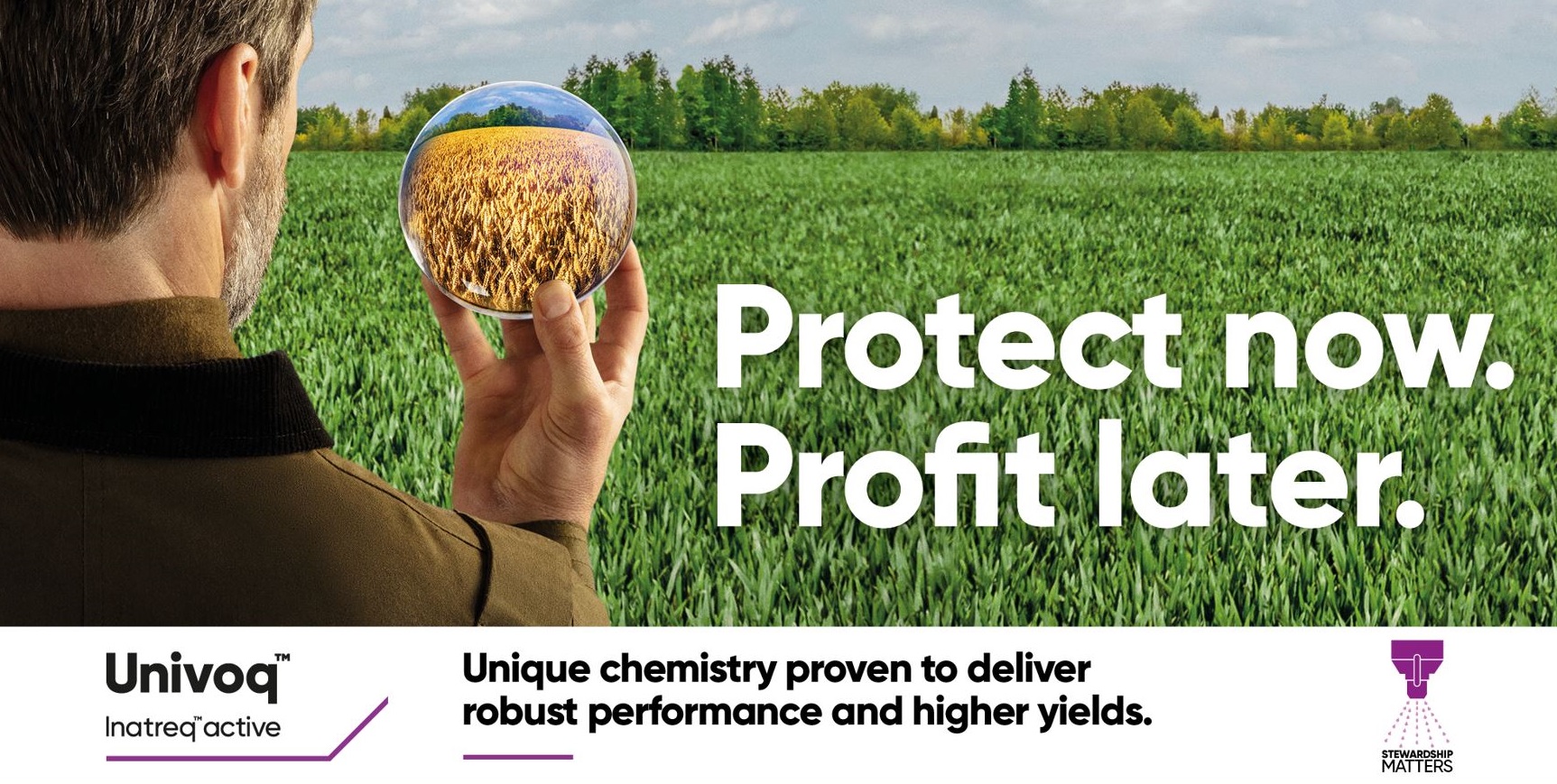
|
|
|
Potato planting progress and weed management considerations
Potato planting is progressing well under favourable soil conditions, provided that soil compaction is avoided, and destoning is managed effectively. With little rain forecast for the coming week and stable weather conditions, the crop is expected to be planted in near-record time, though this could change unexpectedly.
The 2024 harvest was notably easier than the previous campaign, which should help reduce the challenge posed by volunteer plants. A smoother planting campaign should also give growers ample time to manage grading line dumps, thereby minimizing early-season risks.
Focus on herbicides
With it being too early to assess the situation in relation to late blight at present, thoughts instead should be more focussed around herbicides. A dry-planted ridge may not retain its shape, and pre-emergence herbicides applied in a seal on the ridge could be disrupted by gravity and wind, potentially allowing weeds to flourish once rainfall or irrigation occurs. This increases the likelihood of a greater weed flush, which could reduce the effectiveness of the pre-emergence herbicides typically relied upon.
Titus®, a contact acting herbicide, offers the perfect solution for these conditions. Containing rimsulfuron, it targets key problem weeds such as cleavers, chickweed, redshank, mayweed and oilseed rape volunteers. Use Titus from 1st February pre-emergence up until the crop is 25cm high. Titus should always be used with Vivolt adjuvant, an SC formulation, containing 90.0 % w/w alkoxylated alcohols.
Application guidance for Titus Herbicide
Timing: Apply Titus when broad-leaved weeds are small and actively growing, typically from the cotyledon to four-leaf stage. For grasses, apply pre-tillering (two-to-three leaves).
Compatibility: Titus is suitable for all potato varieties except seed crops. Titus can be used with metribuzin to broaden the weed control spectrum in tolerant potato varieties.
Dosage: Apply Titus at 50g/ha when used alone, or 40-50g/ha when mixed with metribuzin. Always use with Vivolt adjuvant.
|

|
|
|
Sugar beet crop status and how our solutions will help maximise yield
Sugar beet drilling is progressing well with dry conditions for soil work, unfortunately the same conditions are slowing crop growth and weed emergence.
Now that we have had some rain, growth will resume, weed emergence will be fast and weed pressure will develop quickly.
Early applied residual acting products will be under pressure because of the lack of soil moisture at application and consequently weeds will start to slip through the net. The worst of these yield robbing weeds include creeping thistle, volunteer potatoes and groundsel.
Shield Pro™ herbicide
Shield Pro offers control of vol. potatoes, creeping thistle, groundsel, mayweeds, smooth sow thistle and corn marigold and should be included in later weed control applications, once conditions allow, to take out these difficult weeds.
BlueN™ nutrient efficiency biostimulant
BlueN contains Methylobacterium symbioticum, a bacteria that converts atmospheric N2 into ammonium which can be used by the plant.
Key benefits
• BlueN enhances plant growth and yields by improving the nitrogen availability in the plant throughout the growing season.
• BlueN meets changing market expectations by providing a supplementary and sustainable source of nitrogen, without the risk of leaching or releasing additional greenhouse gases. BlueN reduces the dependency of nitrogen fertiliser uptake from the soil and ensures the plant has access to nitrogen all season long.
Click here to read more about how Sam Myhill, an East Anglian farmer, increased his yield by 29% by using BlueN.
|
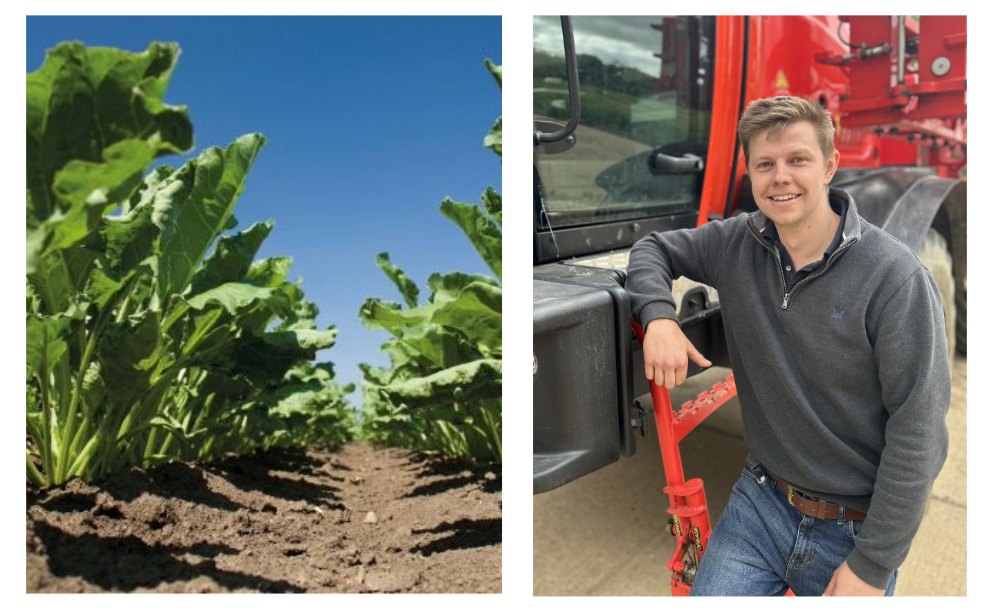
|
|
|
Oilseed rape crop update
As we move into April, we are pleased to report that many winter oilseed rape crops have successfully fended off pests and are entering spring with strong growth compared to previous years.
Grass weed control from applications of Kerb® Flo or Astrokerb® in the autumn worked well giving great control of blackgrass, ryegrass and annual meadowgrass.
The start of spring was slow, which extended the window for Korvetto® applications due to the slower growth. We received many reports of late germinating mayweed, cranesbills and cleavers, of which we know Korvetto does a great job to control!
There are some impressive oilseed rape crops out there, showing great potential. However, we did receive reports of pigeon damage, particularly in the south. It was worth waiting in many cases to see the crop recover, particularly after a dose of fertiliser and as temperatures have increased. If the buds and growing point are not affected, the crop normally recovers. Having patience in these cases has paid off.
Don’t forget to bookmark our OSR hub for advice through the season or for assistance, please don’t hesitate to contact our team.
|
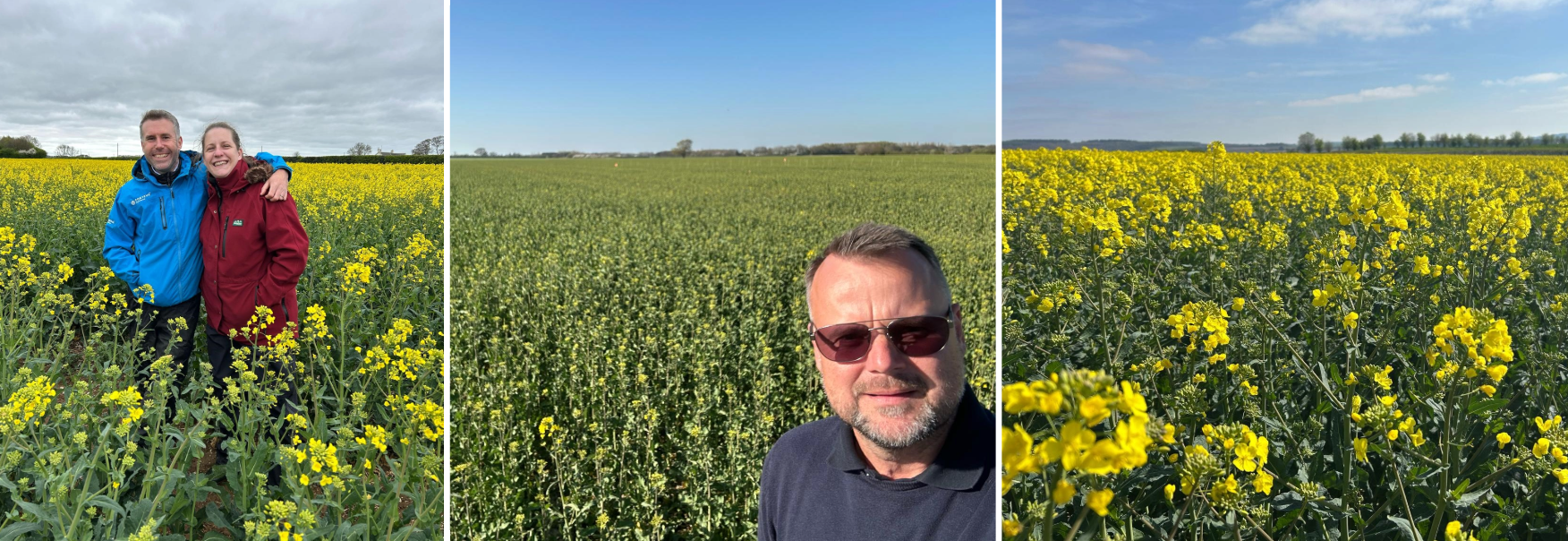
|
Healthy OSR crops L-R: Adam and Abi in the Yorkshire Wolds yesterday; Joe in Yorkshire last week and Salisbury last week.
|
|
|
Pioneer winter oilseed rape hybrid range
Our range of Pioneer® WOSR hybrids that have been extensively tested across a variety of sites in the UK. Available for 2025/2026:
- PT303: The first hybrid to be marketed with built-in tolerance to Sclerotinia, that also has partial resistance to Verticillium Stem Stripe.
- PT312: Provides a very high gross output yield with a very high oil content. It combines Protector® Sclerotinia tolerance with partial resistance to Verticillium Stem Stripe and Turnip Yellows Virus resistance.
- PT315: Provides a very high gross output yield with a very high oil content. It combines Pod Shatter resistance with Turnip Yellows Virus resistance.
For further information about Pioneer Oilseed Rape hybrids, visit the Pioneer hub or take a look at the agronomic descriptions table below.
|
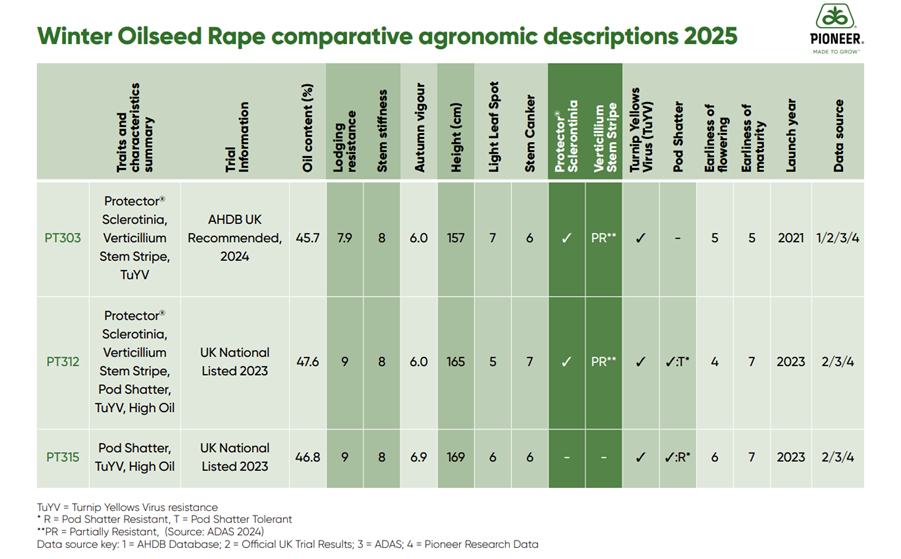
|
The 2025/2026 WOSR hybrid guide can be downloaded here.
|
|
|
|
|
|
Keep nitrogen where it’s needed during maize establishment with Instinct
When growing maize it is worth considering adding Instinct®, a nitrogen stabiliser, when slurries, digestate, or other fertiliser applications are made to extend the nutrient availability to plants while they establish.
Instinct stabiliser has demonstrated reductions in nitrogen leaching of approximately 50% and denitrification through greenhouse gases of around 45% and means more nitrogen is kept where it is needed as maize crops develop.
Instinct utilises Corteva's unique Optinyte™ technology, keeping more nitrogen in the soil for longer periods, significantly improving use efficiency. The product works by slowing down the conversion of ammonium to nitrate, preventing nitrogen loss through leaching and denitrification, and ensuring more remains in the rooting zone.
Application is flexible – Instinct can be mixed into slurry or digestate before field application, or sprayed on shortly after. It's also compatible with any fertiliser containing ammonia, such as sludge, urea, UAN and ammonium nitrate.
For dairy farms specifically, Instinct offers significant advantages, particularly for maize crops which often face nitrogen limitations due to current regulations.
The timing of nitrogen availability is another crucial factor that Instinct addresses for maize growers.
"You don't need to necessarily change what you put on, Instinct just makes everything work better and more economically." Read more here.
Keeping more nitrogen in the soil for when it’s needed
|
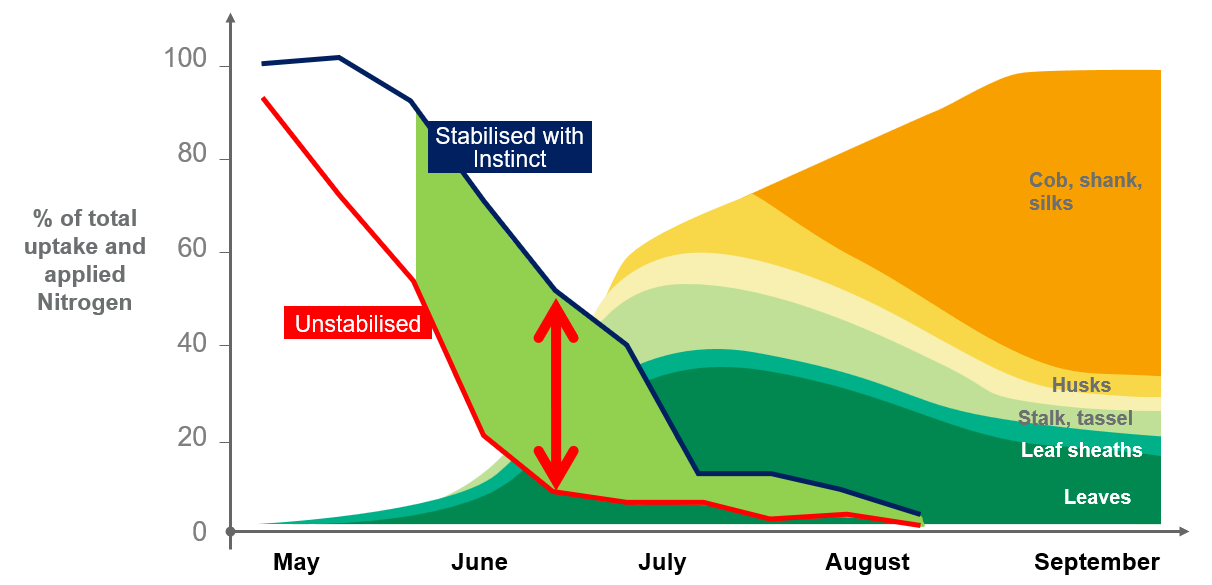
|
The chart above combines two data sets. The lines on the left illustrate the amount of ammonium recovered from soil, comparing Instinct stabilised versus unstabilised maize. This is overlaid on a chart depicting the cumulative nitrogen demand and its distribution.
Keeps more nitrogen available in the root zone for longer, leading to optimised yield.
For more information visit the Instinct product page here or contact our hotline.
|
|
|
Starane Hi-Load: Label changes to advance its use in maize
Starane® Hi-Load is a concentrated formulation of fluroxypyr that offers advantages in terms of time-saving for spray operators, reduced packaging and a product label that continues to evolve to meet market needs.
A great example of this is in maize, where it is much valued for its control of key weeds such as black nightshade, knotgrass, black bindweed, volunteer potatoes, docks and fumitory.
Label restrictions on all fluroxypyr-containing products have meant that tank mixing with partner herbicides in maize has not been permitted, until now!
Corteva has now secured a label update for Starane Hi-Load that removes this tank-mix restriction. It can now be used with other herbicides where supported.
It is an excellent fit for the new maize herbicide Dragster®. It can be applied from the 3-leaf stage, up to 7 leaves unfolded and, crucially, can now be applied in a tank-mix, up until the buttress roots have started to develop on the first node.
In addition, it offers the most extensive range of EAMU’s (Extension of authorisation) for a wide range of crops. Read the full article here.
|

|
|
|
How much do you know about Ympact biostimulant seed treatment?
Ympact® is a novel biostimulant seed treatment enhancing seedling growth by optimisiing metabolic process and abiotic stress tolerance.
With the recent dry weather in many parts of the country, early drilled crops of spring cereals need all the help they can get to germinate and get established. A lot of spring cereals are in the ground and more to go in some areas.
To help get your crops off to a good start, adding Ympact to your standard seed dressings will help with early root and shoot development.
The Humic and Fulvic acid with bonded nutrients, Zinc, Copper and Manganese help with abiotic stress tolerance.
With the dry weather reducing soil moisture humic substance in Ympact can retain approximately 7 times of its volume in water close to the seed.
A reduction in chemical stress from conventional seed treatments also allows plants to develop undisturbed.
To find out more information visit the product webpage and a new video on the benefits of using Ympact here.
|

|
|
|
Want to hear more from us?
Update your preferences and tailor your choices to make sure you receive the communications that are right for you. Don't forget to enter into our monthly prize draw by ticking the box before submitting to be in with the chance to win!
You can also stay in the loop with all the latest updates by following @CortevaUK on X and Facebook.
|
|
|
Get in touch with our Hotline team
|
|
|
USE PLANT PROTECTION PRODUCTS SAFELY. Always read the label and product information before use. For further information including warning phrases and symbols refer to label. ®, ™ Trademarks of Corteva Agriscience and its affiliated companies. All other brand names are trademarks of other manufacturers for which proprietary rights may exist. All manufacturers tradenames and trademarks are duly acknowledged. © 2025 Corteva.
|
|
|
|
|